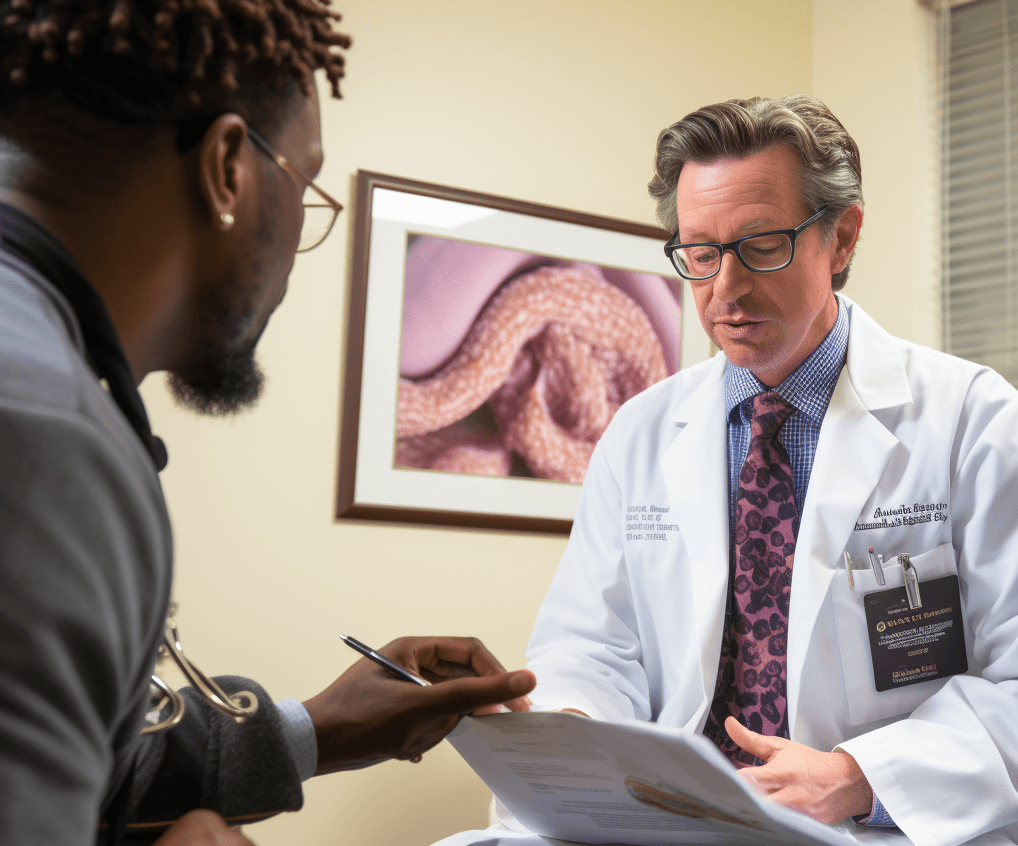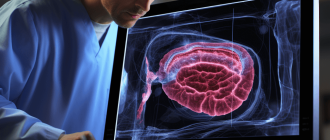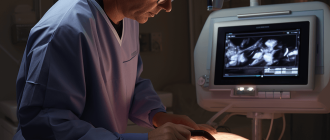
Findings and Suggested Actions Following a Colonoscopy Procedure with Biopsy
The medical procedure known as colonoscopy allows doctors to examine the interior of the colon for any signs of abnormality. Often, a biopsy is conducted during this procedure to gather tissue samples for further analysis. This article aims to provide a comprehensive overview of the results and recommendations following a colonoscopy with biopsy.
A colonoscopy is an important diagnostic tool for detecting illnesses such as colorectal cancer, polyps, and other gastrointestinal issues. The addition of a biopsy can provide even more detailed information, allowing for a more precise diagnosis and treatment plan.
“The fear of the unknown often causes more anxiety than the procedure itself.”
It’s natural to feel anxious about the procedure and its results. However, understanding what to expect can alleviate some of these fears. We hope this article will help to demystify the process and provide valuable information for those undergoing a colonoscopy with biopsy.
Disclaimer: The information provided in this article is intended for general informational purposes only. It is not a substitute for professional medical advice, diagnosis, or treatment. Always seek the advice of your physician or other qualified health provider with any questions you may have regarding a medical condition.
What can a colonoscopy biopsy detect?
A colonoscopy biopsy is a procedure used to extract a small sample of the colon’s lining for further examination. It can detect a variety of abnormalities and diseases. Here is a list of conditions that a colonoscopy biopsy can detect:
| Condition | Description |
|---|---|
| Polyps | These are abnormal growths in the colon that can be benign or potentially develop into cancer. |
| Colorectal Cancer | This is a malignant tumor arising from the inner wall of the large intestine. |
| Colitis | This is an inflammation of the colon, often caused by diseases such as Crohn’s disease and ulcerative colitis. |
| Diverticulosis | This condition is characterized by small pouches that can form in the colon wall and become inflamed or infected. |
| Bleeding Lesions | These are abnormal areas in the colon where bleeding is occurring, which can be caused by a variety of conditions, including cancer and diverticulosis. |
Overall, a colonoscopy biopsy is a crucial tool in diagnosing and managing many gastrointestinal diseases. A healthcare provider can recommend a colonoscopy biopsy based on symptoms, risk factors, and individual health histories.
Overview of Colonoscopy Biopsy
A colonoscopy biopsy is a procedure where a small sample of tissue is taken from the colon for testing. This is usually done during a colonoscopy, a test that allows your doctor to examine the inner lining of your large intestine.
The biopsy is done using a tool on the colonoscope. The colonoscope is a long, flexible tube that’s inserted into the rectum. A tiny camera at the tip of the tube allows the doctor to view the inside of the entire colon. If necessary, pieces of tissue can be removed for analysis and potential diagnosis of various conditions.
Common reasons for a colonoscopy biopsy include bleeding, inflammation, abnormal growths, or polyps in the colon. The tissue samples can be examined under a microscope for signs of disease such as cancer or colitis.
Most people feel nothing during the biopsy. You may feel a sensation of pressure or tugging when the sample is taken. After the procedure, you may have mild cramping or bloating. However, severe pain, fever, and heavy rectal bleeding are not normal and should be reported to your doctor immediately.
A colonoscopy biopsy is a safe and effective method for diagnosing a wide range of gastrointestinal diseases. It’s a crucial tool in the early detection and treatment of colorectal cancer, the second leading cause of cancer deaths in the United States.
Types of Conditions Detectable
A colonoscopy with biopsy can help detect a variety of conditions affecting the colon. The following table provides an overview of some of the most common conditions that can be identified:
| Condition | Description |
|---|---|
| Polyps | These are small clumps of cells that can develop on the lining of the colon. While most polyps are benign, some can develop into colon cancer over time. |
| Colon Cancer | Colon cancer, also known as colorectal cancer, usually begins as small, noncancerous clumps of cells called polyps. Over time these polyps can become colon cancers. |
| Inflammatory Bowel Disease (IBD) | This term encompasses a variety of conditions characterized by inflammation of the digestive tract, including Crohn’s disease and ulcerative colitis. |
| Diverticulosis and Diverticulitis | Diverticulosis is a condition characterized by small, bulging pouches in the digestive tract. When these pouches become inflamed or infected, the condition is known as diverticulitis. |
| Bleeding | Bleeding in the colon can have many causes, including hemorrhoids, ulcers, polyps, or tumors. |
It’s important to note that while a colonoscopy with biopsy can detect these conditions, further testing may be necessary to confirm a diagnosis and determine the best treatment approach.
Importance of Early Detection
Early detection of colon cancer through colonoscopy with biopsy is crucial for a successful treatment and recovery. Colon cancer is often asymptomatic in the early stages, making it difficult to diagnose without routine screenings.
By the time symptoms such as rectal bleeding, abdominal pain, and unexplained weight loss appear, the cancer may have progressed to a more advanced stage. Therefore, regular screenings are recommended for those over 50, or earlier for those with a family history of the disease.
Benefits of Early Detection
Early detection of colon cancer has several benefits:
| Benefit | Description |
|---|---|
| Better Survival Rates | When colon cancer is found early, the 5-year relative survival rate is about 90%. |
| More Treatment Options | Early-stage cancers are more likely to be treated successfully with surgery alone, without the need for chemotherapy or radiation. |
| Prevention | Colonoscopy can find polyps before they turn into cancer, allowing them to be removed and preventing cancer from developing. |
Despite these benefits, many people avoid colonoscopies due to fear, misinformation, or lack of awareness. It’s important to educate patients about the importance of early detection and to address any concerns they may have about the procedure.
What diseases can be detected by a colonoscopy biopsy?
A colonoscopy with biopsy is a diagnostic procedure that allows doctors to examine the inner lining of the large intestine for abnormalities. This procedure is capable of detecting a variety of diseases and conditions that can affect the colon. These include:
- Colorectal Cancer: This is the main disease that a colonoscopy with biopsy can detect. If there are any polyps or abnormal growths in the colon or rectum, a biopsy can confirm if it’s cancerous.
- Inflammatory Bowel Diseases: Conditions such as Crohn’s disease and ulcerative colitis cause inflammation in the colon. A biopsy can help diagnose these conditions by revealing the presence of inflammation and ulcers.
- Diverticular Disease: Diverticula are small pouches that can form in the lining of the colon. While they often don’t cause symptoms, they can become infected or inflamed. A colonoscopy with biopsy can detect diverticula and any associated complications.
- Polyps: These are small growths in the lining of the colon that can be precursors to cancer. A biopsy can help identify the type of polyp and determine if it’s likely to become cancerous.
- Bleeding: If there’s unexplained bleeding in the colon, a colonoscopy with biopsy can help identify the source.
- Other abnormalities: These can include things like strictures (narrowing of the colon), fistulas (abnormal connections between different parts of the colon), and other unusual growths or lesions.
A colonoscopy with biopsy is a crucial tool for detecting a wide range of diseases and conditions that can affect the large intestine.
Common Diseases and Conditions
Colonoscopy with biopsy is a procedure often used to diagnose a variety of diseases and conditions affecting the colon. Some of the most common include:
Colon Polyps
Colon polyps are small clumps of cells that form on the lining of the colon. While most colon polyps are harmless, some can develop into colon cancer over time.
Colon Cancer
Colon cancer is the third most common type of cancer in the United States. It typically starts as small, noncancerous clumps of cells (polyps) and over time, some of these polyps can turn into colon cancer.
Inflammatory Bowel Disease (IBD)
IBD is a term that describes conditions characterized by chronic inflammation of the digestive tract, such as Crohn’s disease and ulcerative colitis.
Diverticulosis and Diverticulitis
Diverticulosis is a condition where small pouches form in the walls of the colon. If these pouches become inflamed or infected, it is known as diverticulitis.
Colorectal Polyps and Cancer
Colorectal polyps are growths that occur on the inner lining of the colon or rectum. Most are benign, but some can become cancerous if not removed.
Early detection and diagnosis of these conditions can significantly improve the outcome and prognosis. Therefore, regular colonoscopy screenings are recommended for individuals over the age of 50, or earlier for those with a family history of colorectal cancer or other risk factors.
Specific Conditions and Their Indicators
A colonoscopy with biopsy can help to identify a variety of specific conditions, each of which is associated with its own particular indicators. These indicators are typically symptoms that have prompted the colonoscopy procedure in the first place.
For instance, one common condition that can be identified through a colonoscopy procedure is colorectal cancer. This condition is often indicated by symptoms such as changes in bowel habits, rectal bleeding, persistent abdominal discomfort, weakness or fatigue, and unexplained weight loss.
Another condition that can be identified through a colonoscopy with biopsy is inflammatory bowel disease (IBD), which includes conditions like Crohn’s disease and ulcerative colitis. The indicators for these conditions often include abdominal pain, diarrhea, rectal bleeding, rapid weight loss, and an increased frequency of bowel movements.
Diverticular disease, characterized by small bulges or pockets (diverticula) that develop in the lining of the intestine, is another condition that can be detected through a colonoscopy. This condition is often indicated by symptoms like abdominal pain, bloating, constipation, and a change in normal bowel habits.
These are just a few examples. It’s important to note that symptoms can vary widely among individuals, and not all individuals with these conditions will experience these symptoms. Therefore, regular screenings and check-ups are crucial for early detection and treatment of these conditions.
What if colon biopsy is positive?
A positive result from a colon biopsy means that abnormal cells, often cancerous, have been detected in the colon tissue sample. It’s essential to understand that a positive biopsy result is a preliminary diagnosis that requires further investigation. A positive finding does not always indicate a full-blown cancer; it could also mean a precancerous condition that could develop into cancer over time.
If the biopsy is positive, the next step usually involves determining the stage and extent of the cancer, if present. This may involve further tests, such as blood tests, imaging scans, or even a more extensive biopsy. The results of these tests will help guide the treatment plan.
Treatment options could range from surgery to remove the cancerous tissue, to radiation therapy, chemotherapy, or a combination of these. The choice of treatment will depend on the stage of the cancer, the patient’s overall health, and personal preferences. It’s important to discuss all possible treatment options and their potential side effects with your healthcare provider.
It’s also crucial to remember that early detection and treatment can significantly improve the prognosis for colon cancer. Regular screenings, especially for those at high risk, can help catch precancerous conditions before they progress to cancer.
Interpreting a Positive Colonoscopy Biopsy Result
A positive colonoscopy biopsy result indicates that abnormal cells were found during your examination. It is crucial to understand that a positive result does not always mean you have cancer. There are several reasons why your results may come back positive.
- Polyps: These are small clumps of cells that can be benign (noncancerous) but can sometimes become cancerous. Most polyps are not harmful, but certain types can increase your risk of developing colorectal cancer.
- Colitis: This term refers to inflammation in your colon. Both infections and diseases like Crohn’s and ulcerative colitis can cause it.
- Diverticulosis: This condition occurs when small pouches, known as diverticula, form in the walls of your colon. If these pouches become inflamed or infected, it is known as diverticulitis.
- Colorectal cancer: This is a form of cancer that occurs in the colon or rectum. It is often seen in people over age 50 and those with a family history of the disease. A positive biopsy result can be an early indicator of this condition.
It’s essential to remember that a positive result is an opportunity for early intervention and treatment. Your healthcare provider will guide you through the next steps, which may include further testing or treatment options based on your specific condition.
Always consult with your healthcare provider to understand your results better and discuss any concerns you may have. Early detection and treatment can significantly improve the prognosis for many gastrointestinal conditions, including colorectal cancer.
Implications of a Positive Result
A positive result from a colonoscopy with biopsy could indicate the presence of abnormal cells, polyps, or cancer in the colon or rectum. However, a positive result does not always mean cancer. Here are some possible implications:
- Abnormal Cells: The presence of abnormal cells, also known as dysplasia, may suggest a pre-cancerous condition. If not treated, these cells could potentially turn into cancer.
- Polyps: A positive result may indicate the presence of polyps in the colon or rectum. While most polyps are benign, some could be cancerous or may become cancerous over time.
- Colorectal Cancer: A positive biopsy result could also indicate the presence of colorectal cancer, which is a serious condition that requires immediate treatment.
Regardless of the result, it is important to discuss its implications with your healthcare provider. They can provide further explanation, discuss potential treatment options, and guide you through the next steps.
Recommendations Following a Positive Result
After a positive result, your healthcare provider will likely recommend further testing to confirm the diagnosis and determine the extent of the condition. The following steps may be recommended:
- Additional imaging tests, such as a CT scan or MRI, to get a more detailed look at the colon and rectum.
- Further biopsies to determine the type and stage of any cancer cells present.
- Genetic testing to identify any inherited syndromes that may increase your risk of colon cancer.
Following the additional tests and diagnosis, your healthcare provider will discuss treatment options with you. These may include surgery, radiation therapy, chemotherapy, or a combination of these.
What happens if colon biopsy detects cancer?
If a colon biopsy detects cancer, several things may happen. Firstly, the doctor will review the biopsy report and other test results with the patient. The next step usually involves staging the cancer. The stage of the cancer describes how much it has grown and whether it has spread to other parts of the body.
Staging is important as it helps the healthcare team plan the appropriate treatment. It may involve further tests such as blood tests, CT scans, MRI, or even PET scans. Once the stage is determined, the doctor will discuss the treatment options with the patient.
Treatment for colon cancer may involve surgery, radiation therapy, chemotherapy, targeted therapy, or a combination of these. The choice of treatment depends on the stage of the cancer, the patient’s overall health, and their personal preferences.
It’s crucial for patients to discuss their treatment options and potential side effects with their healthcare team. This helps them make an informed decision about the best treatment plan for them. It’s also important to seek a second opinion if they have any doubts or questions about their diagnosis or treatment plan.
While a cancer diagnosis can be frightening, it’s important to remember that there are many effective treatments available for colon cancer. Many people with colon cancer recover fully, especially if it’s detected early.
Colon Cancer Detection
Colon cancer, also known as colorectal cancer, is a type of cancer that starts in the colon or rectum. Detecting colon cancer at an early stage significantly increases the chances of successful treatment. There are several methods used for colon cancer detection, including colonoscopy with biopsy.
Colonoscopy
Colonoscopy is a common diagnostic procedure used to detect abnormalities or changes in the colon and rectum. During a colonoscopy, a long, flexible tube (colonoscope) is inserted into the rectum. A tiny video camera at the tip of the tube allows the doctor to view the inside of the entire colon.
Biopsy
If any abnormal tissue is found during the colonoscopy, a biopsy can be performed. This involves taking a small sample of tissue for further examination under a microscope. Biopsy is the only definitive way to diagnose colon cancer.
Other Detection Methods
While colonoscopy with biopsy is one of the most reliable methods for detecting colon cancer, other methods can also be used. These include:
- Fecal immunochemical test (FIT): This is a test that looks for hidden blood in the stool, which can be an early sign of cancer.
- Flexible sigmoidoscopy: Similar to a colonoscopy, this test involves the use of a flexible, lighted tube to examine the rectum and the lower part of the colon.
- CT colonography: This test, also known as a virtual colonoscopy, uses X-rays and computers to produce images of the entire colon, which are then displayed on a computer screen for the doctor to analyze.
It is important to note that early detection is key in the successful treatment of colon cancer. Regular screenings are recommended, especially for individuals over the age of 50 or for those with a family history of colon cancer.
Staging and Further Evaluation
After a colonoscopy with biopsy, the next step is often staging the disease to understand the extent of cancer spread, if any, in the body. This is crucial in planning the right treatment strategy.
Staging usually involves further diagnostic tests, which may include imaging studies such as CT scans, MRI scans, or PET scans. In some cases, additional endoscopic procedures or even surgery may be necessary to determine the stage of the disease.
| Stage | Description |
|---|---|
| Stage 0 | Abnormal cells are present but have not spread to nearby tissue. Also called carcinoma in situ, or CIS. |
| Stage I | Cancer has formed and spread beyond the innermost tissue layer of the colon wall to the middle layers. It may have spread to the muscle layer or the submucosa (the second layer of tissue). |
| Stage II | Cancer has spread beyond the middle tissue layers of the colon wall or has spread to nearby tissues around the colon or rectum. |
| Stage III | Cancer has spread to nearby lymph nodes, but not to other parts of the body. |
| Stage IV | Cancer has spread to other parts of the body, such as the liver or lungs. |
Based on the staging and the patient’s overall health status, a suitable treatment plan can be developed. This may involve surgery, radiation therapy, chemotherapy, targeted therapy, or a combination of these treatments. The goal is to eliminate the cancer, prevent its spread, and manage any symptoms or side effects.
What treatments may be recommended if colon biopsy is positive?
If the colon biopsy result is positive, it means that there are abnormal cells or tissues in the colon that may be cancerous or precancerous. Depending on the type and stage of the disease, different treatments may be recommended by the healthcare provider. Here are some common treatments:
Surgery: The most common treatment for colon cancer is surgery. The purpose is to remove the cancerous tissues or tumors. The types of surgery can range from a small, local excision if the cancer is found at a very early stage, to a colectomy (removal of a part of the colon) if the cancer has spread.
Chemotherapy: This treatment uses drugs to kill cancer cells or to stop them from dividing. Chemotherapy can be used before surgery to shrink tumors, or after surgery to kill any remaining cancer cells. It can also be used when the cancer has metastasized (spread) to other parts of the body.
Radiation Therapy: This treatment uses high-energy x-rays or other types of radiation to kill cancer cells or to prevent them from growing. Like chemotherapy, radiation therapy can be used before surgery to shrink tumors, after surgery to kill any remaining cancer cells, or when the cancer has metastasized.
Immunotherapy: This is a relatively new type of cancer treatment that boosts the body’s natural defenses to fight cancer. It uses substances made by the body or in a laboratory to improve or restore immune system function.
It’s important to note that the choice of treatment depends on many factors, including the patient’s overall health, the stage and type of cancer, and patient’s preferences. Therefore, it’s crucial to have an in-depth discussion with the healthcare provider to understand the potential benefits, risks, and side effects of each treatment option.
Remember, early detection through regular colonoscopy can significantly increase the chances of successful treatment and recovery.
Treatment Options for Positive Colonoscopy Biopsy Results
Receiving positive biopsy results after a colonoscopy can be a daunting experience. However, it’s crucial to understand that several effective treatment options are available. The choice of treatment depends on various factors including the stage and location of the cancer, potential side effects, and the patient’s overall health.
Surgery is often the first-line treatment for colon cancer. The aim is to remove the cancerous tissue and some surrounding healthy tissue. The type of surgery will depend on the stage and location of the cancer.
Chemotherapy may be used before surgery to shrink tumors, or after surgery to kill any remaining cancer cells. This treatment uses powerful drugs to destroy cancer cells and can be administered intravenously or orally.
Radiation therapy is another treatment option, especially for rectal cancer. This treatment uses high-energy radiation to kill cancer cells.
Targeted therapies are newer cancer treatments that work by targeting specific abnormalities in cancer cells. Immunotherapy, on the other hand, uses the body’s immune system to fight cancer.
Lastly, participation in clinical trials can provide access to new and experimental treatments. It’s always important to discuss these options with your healthcare provider to determine the best treatment plan for you.
Personalized Treatment Plans
After the colonoscopy with biopsy, a personalized treatment plan is created for each patient based on the results. This approach is crucial to ensure the most effective treatment and management of the condition.
- For benign polyps: The polyps are usually removed during the colonoscopy and no further treatment is typically required. However, the patient will need regular follow-up colonoscopies to check for new polyps.
- For precancerous polyps: These are also removed during the colonoscopy. The patient will need more frequent follow-up colonoscopies. In some cases, if the polyp is large or if there are many, surgery may be required.
- For colorectal cancer: The treatment plan will depend on the stage of the cancer. It may include surgery, radiation therapy, chemotherapy, targeted therapy, or a combination of these. Regular follow-up appointments are also important to monitor the patient’s response to treatment and check for any signs of recurrence.
It should be noted that lifestyle changes may also be recommended as part of the treatment plan. This may include a healthier diet, regular exercise, quitting smoking, and limiting alcohol consumption. These changes can help reduce the risk of recurrence and improve overall health.
Follow-Up Care
Follow-up care is an essential part of the treatment plan. This may involve regular appointments with the doctor, blood tests, imaging tests, and colonoscopies. The purpose of follow-up care is to monitor the patient’s health, check for recurrence, and manage any side effects of treatment.
Each patient’s treatment plan will be different, based on their unique needs and circumstances. It’s important for patients to work closely with their healthcare team to understand their treatment options and make informed decisions about their care.
Question-answer
What is the purpose of a colonoscopy with biopsy?
A colonoscopy with biopsy is a procedure that is used to detect changes or abnormalities in the large intestine (colon) and rectum. During a colonoscopy, a long, flexible tube (colonoscope) is inserted into the rectum. A tiny video camera at the tip of the tube allows the doctor to view the inside of the entire colon. If necessary, polyps or other types of abnormal tissue can be removed through the scope during a biopsy for further examination and testing.
What are the results that can be obtained from a colonoscopy with biopsy?
The results of a colonoscopy with biopsy can range from normal to the identification of polyps, cancer, or other diseases. A normal result means that the doctor didn’t find any abnormalities in the colon. However, if polyps or other abnormal tissues were found, they would have been removed during the procedure for further examination. These samples are then sent to a laboratory where they are analyzed for signs of disease or cancer. The results from the lab can take several days to a week to come back.
What are the recommendations after a colonoscopy with biopsy?
After a colonoscopy with biopsy, it’s recommended to take it easy for the rest of the day as you might feel groggy due to the sedative used during the procedure. Avoid driving or operating heavy machinery for 24 hours. You may experience some bloating or cramping right after the procedure but it should dissipate quickly. If biopsies were taken or polyps were removed, you might notice slight bleeding from your rectum, which is normal. However, if you experience heavy bleeding, severe abdominal pain, or fever, you should contact your healthcare provider immediately.
Can I eat normally after a colonoscopy with biopsy?
Yes, you can eat normally after a colonoscopy with biopsy. However, it’s recommended to start with light meals and gradually return to your regular diet. You should also drink plenty of fluids to replace those lost during colon preparation. If polyps were removed or a biopsy was taken, your doctor may recommend a special diet for a few days.
How often should I have a colonoscopy with biopsy?
The frequency of colonoscopies with biopsy depends on several factors including your age, family history, and the results of your previous colonoscopies. If your results were normal and you have no risk factors for colon cancer, a colonoscopy is typically recommended every 10 years starting at the age of 50. However, if you have risk factors or previous abnormal results, you may need to have colonoscopies more frequently. Your healthcare provider will give you specific recommendations based on your individual health situation.
What is a colonoscopy with biopsy and why is it done?
A colonoscopy with biopsy is a medical procedure that allows doctors to examine the inner lining of the colon or large intestine. It is done using a long, flexible tube called a colonoscope that has a tiny camera at the end. During the procedure, the doctor may also remove small tissue samples (a process called biopsy) from the colon for further testing. The main purpose of this procedure is to identify and diagnose various conditions such as colorectal cancer, polyps, inflammation, bleeding, or other abnormalities that may not be visible through regular physical examinations.
What are the results of a colonoscopy with biopsy?
The results of a colonoscopy with biopsy can provide valuable information about your digestive health. If polyps or other abnormal tissues were found during the procedure, they would be removed and sent to a lab for testing. The lab report on these tissues can help diagnose conditions like colorectal cancer, diverticulosis, inflammatory bowel disease (IBD), or other gastrointestinal diseases. If no abnormalities were found, your results would be considered normal. However, this doesn’t rule out the possibility of small lesions that might have been missed during the procedure.
How long does it take to receive colonoscopy results?
The time it takes to receive colonoscopy results can vary, depending on the specific circumstances. If no biopsies were taken and no polyps were removed, your doctor might be able to discuss the results with you immediately after the procedure. However, if biopsies were done or polyps were removed, these samples need to be sent to a lab for analysis, which can take several days or even weeks. Once the results are back, your doctor will discuss them with you in detail.
What recommendations might be given after a colonoscopy?
Recommendations after a colonoscopy can vary depending on the results. If no abnormalities were found, your doctor might recommend regular screening colonoscopies in the future, especially if you are at an increased risk for colorectal cancer due to factors like age, family history, or personal health history. If polyps were found and removed, your doctor might recommend a follow-up colonoscopy sooner to check for recurrence. If a serious condition like cancer was diagnosed, you would be referred to a specialist for further treatment options.
Is there any aftercare needed following a colonoscopy with biopsy?
Aftercare following a colonoscopy with a biopsy is generally minimal. You may experience minor discomfort or bloating, which should resolve within a day. If biopsies were taken or polyps were removed, you might see a small amount of blood in your stool for a few days. However, if you experience severe abdominal pain, heavy bleeding or fever, contact your doctor immediately as these may be signs of complications. Most people can return to their regular diet and activities the day after the procedure, but your doctor will provide specific aftercare instructions based on your individual situation.






